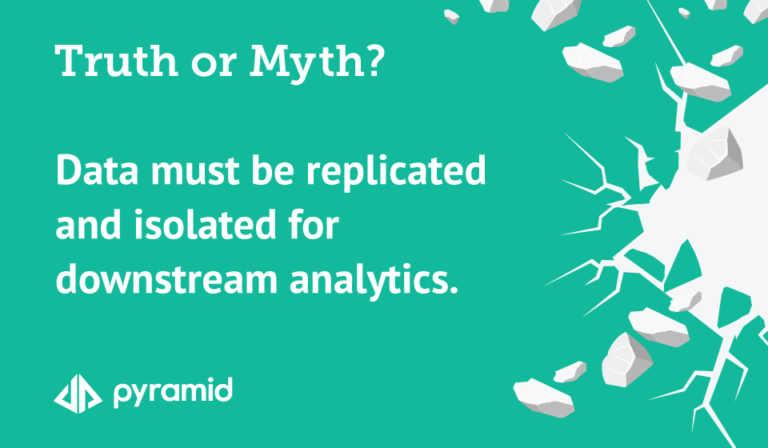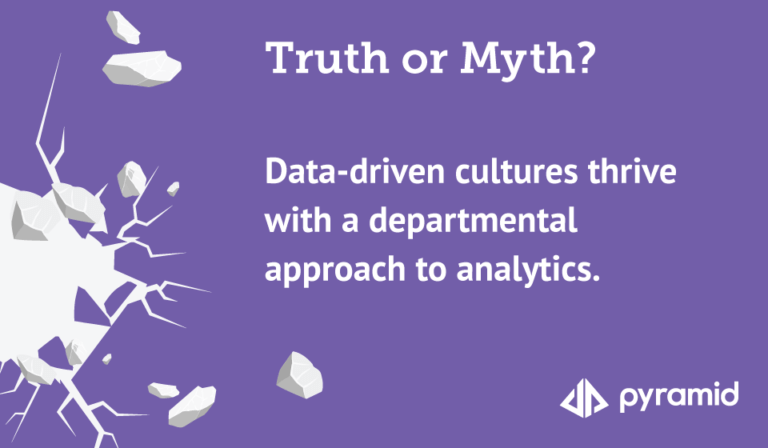Companies leveraging data management and analytics tools are far more likely to exceed business goals compared to companies that lack data-driven capabilities. But successful data initiatives are about more than technology adoption. Tectonic shifts driven by the global disruptions of 2020 are forcing even the most advanced organizations to take a closer look at employee adoption and attitudes toward their analytics initiatives.
Today, companies struggle to scale their analytics capabilities across teams; they struggle to encourage employees to collaborate and even evangelize analytics adoption within each organization. But a cultural transformation of this kind is essential—not only to accelerating analytics adoption but to increasing its efficacy and reducing risk as well. Cultural transformation can “accelerate the application of analytics, amplify its power, and steer companies away from risky outcomes,” as McKinsey describes.
Ultimately, every employee needs to embrace an analytics-centered data culture. As Deloitte shares in their July 2020 report, “Every single investment in data and analytics relies on the ability to forge a Data Culture… If there is no Data Culture, there will definitely be no return from the investments.”
Here we explore the pathways to making analytics not only more accessible and actionable but relevant to daily workflows. We will identify methods to make analytics more appealing to employees whose attitudes and approaches to work and collaboration have changed as well.
A Year of Accelerated Data Technology Adoption
Business leaders agree—2020 has featured a broad acceleration of strategic, technology, and operational changes companies have actually prioritized for years. But despite each case of success, facilitating the cultural transformations necessary to scale analytics remains a challenge. This is critical, as crises have shown us that collaboration is essential for organization-wide responses.
Companies can evolve their approach to digital transformation to meet these requirements. But it requires a greater focus on transforming company culture, emphasizing collaboration, encouraging new employee habits, and adapting to environmental changes like remote work versus new technology investments alone.
Already, leading organizations are building stronger data cultures through data awareness, data literacy, and strategies to increase long-term analytics adoption among employees. This begins with a genuine analysis of company culture, followed by an alignment with the company’s end goal—facilitating company-wide employee acceptance and adoption of analytics.
Four Ways a Successful Data Culture Takes Shape
Employees shape a company’s culture, no matter what “culture” executives attempt to prescribe. When we understand company culture as being an assortment of existing employee habits and expectations, we can visualize the real complexities of culture problems—namely, individual behaviors need to change on a grand scale for a successful data culture to take shape.
With this in mind, executives can impact company culture by helping employees adjust their habits to improve both individual and business outcomes. Here are four ways organizations can take important steps toward improving data culture within their organizations with these necessities in mind.
- Launch a Cultural Change Program that Puts Employees First. Company leaders shouldn’t expect to change company culture by mandate alone. Instead, business leaders should align employees with a better way of doing business based on their individual values and priorities. When employees see new company-wide initiatives as genuine contributors to realizing their own value and success—by providing them with personalized, self-service analytics workflows, for example—they are more likely to take corrective action themselves on existing behaviors that need to change.
- Ensure All Employees Have Individualized Analytics Access. Most traditional approaches to analytics put only a handful of analysts and data scientists in the driver’s seat when it comes to analytics, forcing business users to send queries in order to take advantage of those capabilities. Business leaders must provide everyday business users with their own analytics access—either directly or indirectly—for individualized support of their unique work requirements. Data platforms should adapt to the user interface to each user’s profile—which in most cases won’t require a full suite of capabilities—rather than forcing all users to adapt to a platform’s standard interface.
- Provide Formal Online Spaces for Data-Driven Collaboration. Employees like their jobs to be easier, and they like to have quick access to the people, tools, and resources that make that possible. Prioritizing and advertising internally virtual collaboration spaces within analytics environments puts those individual priorities at the forefront of your digital transformation. It creates a tone of inclusivity for remote workers as well.
- Secure, Train, and Maintain the Right Talent. With a new analytics approach, companies no longer need to hire strictly (1) analytics experts and (2) non-analytics business users. Prioritize talent that realizes the business value of analytics with a willingness to do more, even if they are only beginning to understand its relation to their own responsibilities. Be prepared to retrain employees who are hesitant about adopting analytics or don’t fully understand its potential impact on the business.
Align Business Value and Employee Satisfaction for Data Culture Success
Your employees are your company’s culture—not your business leaders, nor your mission statement, nor your technology. As employees continue to adapt to semi-permanent remote work and grapple with the insecurities of the modern business world, they must also adjust to new strategic priorities and the digital tools they require. But the onus falls to business leaders to make those initiatives worth their while.
Crises strain the cultural bonds that bring employees together; but with the right leadership, they can also reaffirm trust and resilience among employees, as well as with organization leaders themselves.












